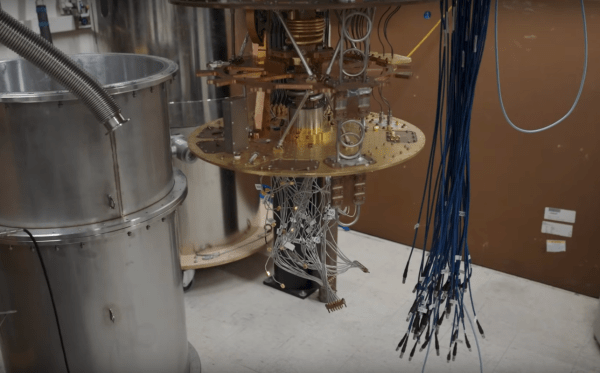Have you heard of the Sprengel pump? It’s how they drew hard vacuum back before mechanical pumps were perfected — the first light bulbs had their vacuums drawn with Sprengel pumps, for example. It worked by using droplets of a particular liquid to catch air particles, and push them out a narrow tube, thereby slowly evacuating a chamber. The catch is that that liquid used to be mercury, which isn’t something many of us have on hand in kilogram quantities anymore. [Gabriel Wolffe] had the brainwave that one might substitute modern vacuum pump oil for mercury, and built a pump to test that idea.
Even better, unlike the last (mercury-based) Sprengel pump we saw, [Gabriel] set up his build so that no glassblowing is required. Yes, yes, scientific glassblowing used to be an essential skill taught in every technical college in the world. Nowadays, we’re glad to have a design that lets us solder brass fittings together. Technically you still have to cut an eyedropper, but that’s as complex as the glasswork gets. Being able to circulate oil with a plastic tube and peristaltic pump is great, too.
If you try it, you need to spring for vacuum pump oil. This type of pump is limited in the vacuum it can draw by the vapor pressure of the fluid in use, and just any oil won’t do. Most have vapor pressures far in excess of anything useful. In the old days, only mercury would cut it, but modern chemistry has come up with very stable oils that will do nearly as well.
How well? [Gabriel] isn’t sure; he bottomed out his gauge at 30 inches of Mercury (102 kPa). It may not be any lower than that, but it’s fair to say the pump draws a healthy vacuum without any unhealthy liquid metals. Enough to brew up some tubes, perhaps.
Continue reading “Oil-Based Sprengel Pump Really Sucks” →
















